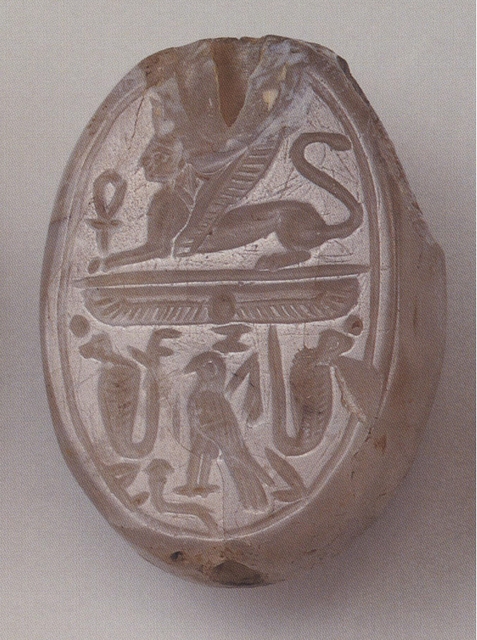Date- 9th–8th cent. BCE
Current Location- Israel Museum, Jerusalem, Israel
Language and Script- Phoenician(?); alphabetic
Biblical Verses-
The Bible introduces Jezebel in unsavory light upon her marriage to Ahab-
Ahab son of Omri did what was displeasing to the LORD, more than all who preceded him. Not content to follow the sins of Jeroboam son of Nebat, he took as wife Jezebel daughter of King Ethbaal of the Phoenicians, and he went and served Baal and worshiped him. He erected an altar to Baal in the temple of Baal which he built in Samaria. 33Ahab also made a sacred post. Ahab did more to vex the LORD, the God of Israel, than all the kings of Israel who preceded him.
(1 Kings 16-30-33)
Later into her queenship, Jezebel uses Ahab’s seal, which probably looked quite similar to this specimen, to sign a royal decree-
His wife Jezebel said to him, “Now is the time to show yourself king over Israel. Rise and eat something, and be cheerful; I will get the vineyard of Naboth the Jezreelite for you.” So she wrote letters in Ahab’s name and sealed them with his seal, and sent the letters to the elders and the nobles who lived in the same town with Naboth.
(1 Kings 21-7-8)
Another instance showing the ultimate importance of possessing the royal seal ring is that of Joseph-
Pharaoh further said to Joseph, “See, I put you in charge of all the land of Egypt.” And removing his signet ring from his hand, Pharaoh put it on Joseph’s hand; and he had him dressed in robes of fine linen, and put a gold chain about his neck.
(Genesis 41-41-42)
General Information-
Since this seal bears the name yzbl, attempts were made to link it to Jezebel, the wife of King Ahab of Israel. Based on its script, the seal has been dated to the late ninth or eighth century BCE. In favor of the identification with the biblical queen, the name “Jezebel” seems to have been rare since it is unattested elsewhere in the repertoire of Phoenician names. Another possible support is for the identification is that the seal’s script and iconography point toward a Phoenician origin, and Jezebel was Phoenician. The iconography incorporates various Egyptian elements, common in Phoenician art of the period, including an Egyptian headdress worn by a sphinx in the upper register with an ankh held between its paws. This is not strong evidence since Egyptian artistic influences are seen through much of the Levant. And, although the transliteration in the Greek Septuagint of Jezebel as ‘Iezabel’ may reflect the spelling on this seal, scholars have concluded that this seal did not belong to the biblical Queen because the Hebrew Bible consistently spells her name with an aleph as the first letter while this seal name begins with yod.
Circumstances of Discovery and Acquisition- The seal, which is of unknown provenance (the circumstances of its discovery are not known), was donated to the Israel Department of Antiquities in the 1960s and is on display in the Israel Museum.
See also-
